EBR charges a service fee to manufacturers to produce ebike reviews and videos, this began in 2018. It’s the same flat fee for each bike, and it helps us to keep the site going while limiting ad clutter. We appreciate the opportunity to serve you with our opinions and data but respect your right to know that we receive compensation :)
The C-Class is a mid-sized electric cargo/utility bike with classic cruiser styling. Two curving tubes run in parallel, all the way from the back of the rear rack to the front of the bamboo platform and headlight mount. With three sections of tubing to reinforce the mid-section of the bike, frame flex is minimized while allowing for lower stand-over height. The step-thru frame is approachable and surprisingly capable… I was told by the founder that it can handle up to 400lbs in total, with up to 180lbs on the rear rack and up to 65lbs on the front rack. That’s way above average! Part of what makes the bike so sturdy and approachable are its 26-inch wheels (verses 27.5″ or 28″) that lower the frame a bit, its deeper rims which shorten spoke length, and the thickness of the spokes themselves. Shorter, thicker spokes tend to be very durable, and the smaller wheel diameter provides a mechanical advantage for the rear hub motor, which is already very powerful. You do lose a bit of comfort with such sturdy/stiff wheels and spokes, but that is addressed quite well by the 2.35″ wide balloon tires from CST, padded faux-leather grips, longer swept-back handlebar, and large sprung saddle. Even though this product is only made in one frame size, the seat can be positioned quite low and the bars can be oriented easily with the tool free adjustable stem. This stem is actually raised up a bit, to provide an upright body position and possibly to reduce the potential for contact with cargo on a fully loaded front rack. The platform rack that Ariel Rider chose for this e-bike is made from bamboo, and there are cutouts in the center for managing shifter, brake, and electrical wires, as well as cutouts at the corners for bungee attachments. There’s even a circular cutout for placing a coffee cup or water bottle, as demonstrated in the video review above. The C in C-Class stands for City and Cargo, but I feel that it could also stand for Cruiser. This is an electric bike that is capable of wearing many hats, so to speak, and it’s priced extremely well at just $1.7k. The company mainly sells direct, so you’ll have to do some unboxing and assembly as we did. I thought it went pretty well overall but was definitely thankful for Arda’s help (he’s the founder of Ariel Rider) because he’s quite fit and strong. Weighing in at roughly 66.2lbs, the C-Class is 10 to 15lbs heavier than most of the other products I review… and that’s due to the extra tubing and racks (the bamboo deck), front and rear fenders and chain cover, larger tires, and high capacity battery. You’ll shave 7.7lbs off of the weight by simply removing the battery, which is easy to do for charging and safe keeping. All things considered, I was impressed with the bike’s performance, and delighted with the four bright color choices. Especially the Ivory, which would stand out best in dark environments.
Driving this bike is a 500 watt nominal, 900 watt peak, planetary geared hub motor from Dapu. Despite its relatively compact size, this motor puts out a lot of power, up to 75 newton meters of torque! However, it feels natural to accelerate when pedaling because the motor controller uses a torque sensor vs. a simple cadence sensor. The sensor itself is contained in a small circular metal enclosure on the left side of the crank spindle, at the bottom bracket. It should hold up well here, and not get bumped around or dirty when riding. Ariel Rider chose well with the large alloy Wellgo platform pedals because they provide the stability and strength needed for loaded riding. I appreciate the alloy chainring protector on the right side and narrow composite chain cover to keep your pants or dress ends clean. The mounting arm for this protector doubles as a guide, so chain drops shouldn’t be an issue… but it would be nice if an actual guide or second alloy plate could be added to the chainring for reassurance. Back to weight vs. performance vs. cost though… The company did choose a slightly upgraded derailleur, Shimano Altus is one step up from entry-level and the 7-speed 11-36 tooth cassette offers good pedaling options for climbing moderate hills and reaching 20+ miles per hour. The C-Class ships with a 20mph top speed limit, but owners are able to enter into the settings by double tapping the power button once the bike is on and entering the four digit password (1919) to either lower or raise the maximum speed, making this a Class 2 or Class 3 product. I suppose that you could even remove the twist throttle by unplugging it, and then ride as Class 1. My one major gripe about the drivetrain is that the shifter mechanism is large, a bit slow, and sometimes difficult to reach. Ariel Rider (and many other companies) opt for this shifter because it leaves more space for twist throttles and their accompanying housing and cable feeds. Having a throttle is nice when you’re trying to balance a heavy load, it comes in handy for stop signs and traffic signals… where you need an instant boost to get started, but heavy use will use more power and eat into your range. The hub motor is from Dapu, a brand that I have seen on Pedego and Easy Motion electric bikes, which I view as being higher quality. It does make some electronic whirring noises, as most geared motors do, but isn’t as loud as some.
Powering the bike is a rear-rack mounted battery pack containing lithium-ion cells from LG. It comes with a one year warranty, and all other parts get 2+ years of coverage. Ariel Rider has been around for several years now, and I’ve reviewed many of their older products. It’s a smaller company, but one that is run well and continually improved. This battery is a good example, because it’s so compact and well-integrated on the rear rack. The weight isn’t too bad when you look at the 48 volt 12.6 amp hour capacity (604.8 watt hours total), which is well above average for the 2018 season. You don’t have to leave the key in this battery in order to power it on, as you do with some of the mid-frame batteries from Ariel Rider, and it has an integrated LED tail light! There are definitely some trade-offs when it comes to rear rack batteries, weight distribution is the primary consideration, but it does free up the main section of frame to be lower and narrower. If you opt for one of the canvas pannier bags that the company sells, the battery almost completely disappears from view! Keep in mind, not all panniers will work with this rack, because the tubing is so thick and sturdy. Many clip-on panniers require narrower tubing, so I’d stick with the Ariel Rider options or maybe use a trunk bag on top. The battery powers the motor, backlit LCD display, and three integrated lights on this ebike, but it does not offer a USB charging port. Filling the pack may take a bit longer due to the basic 2-amp charger, but at least it’s lightweight and fairly compact. Finally, I appreciate how discrete most of the cables are here, they are internally routed through the frame in many places and wrapped with plastic mesh for protection and organization when exposed.
Operating this ebike is fairly comfortable and intuitive. The display panel is clean and compact, with only three buttons to interact with. It isn’t removable, so it could take some damage at public racks, but it will swivel to reduce glare if you don’t over-tighten the mount. Once the battery pack is charged up and mounted to the frame, just hold the little power button at the top left corner of the display to power it on. The monochrome readout blinks on fairly quickly, showing your current speed, power meter, assistance level (0-6), battery charge level, and some trip stats below. You can change the readouts by tapping the power button once, and this will show average speed, max speed, odometer, and trip time. Most of your interaction will probably be clicking the plus and minus keys to raise or lower the pedal assist level. I love how the throttle can override the different assist levels for a quick boost of power and speed. That said, it’s always hot, so you could get an unexpected boost when loading, mounting, or dismounting. During the ride tests, I pulled the handle bars up and back using the tool-free adjustable stem for a more upright body position and that also made the display closer and easier to read. It’s nice that the wire for this display was long enough to accommodate such big comfortable bars! You can activate the display backlighting by holding the + button and activate walk mode by holding the – button (for 7 km/h 3.7 mph assistance). Walk mode is nice to have if you’ve got fully loaded racks or child seat on the back. Again, the bike is fairly heavy as-is. For those who are interested in child seats, the Yepp Nexxt Maxi would work because it clamps from the sides. There are even more settings to explore in the menu system by double tapping the power button, as mentioned earlier. This is where you can change units, adjust backlight brightness, and raise or lower the top speed by entering password 1919 at the last screen.
While shooting this review, I also got to test ride some of the other models from Ariel Rider, including the M-Class, which is a compact ebike that’s also capable of hauling some cargo. I was told that the bikes are manufactured in the same facility as Vanmoof, Tern, CUBE, and BH/Easy Motion, which makes sense given the higher quality drive system, battery, and controller unit. I really appreciate how Ariel Rider has managed to keep the price low here without sacrificing too much in the way of performance and quality. There’s definitely some frame flex and weight distribution trade-offs, but the frame is approachable. The drivetrain should hold up alright, but doesn’t shift as fast or offer a super wider range with special clutch features and dedicated chain guides. The lights are great but the headlight isn’t super visible under the bamboo deck and cannot be aimed perfectly (it aims down mostly). The main things have been done well, including the double leg kickstand for stable loading, the frame mounted racks, and the powerful hydraulic disc brakes with motor inhibitors. Part of me would love to see two 180mm rotors vs. a 180mm in the rear and 160mm up front, and I did mention this to Arda. He explained that since the rear rack is capable of supporting the heaviest loads, they chose to upgrade that one. Arda and his brother are from Turkey, you may notice their accents in the video! They have earned my trust and inspired me with a story about how a family member passed away due to health conditions, inspiring them to focus their careers on health and sustainability. At the end of the day, this ebike is comfortable and capable. It can feel a bit odd to turn and not see your front wheel due to the frame-mounted rack, but there wasn’t any frame wobble, the fenders looked very nice and did not produce a lot of rattling (despite being plastic composite), and I never felt imbalance when mounting or stepping down because of how low the frame and tubing design are. As always, I welcome questions and feedback in the comments section below and in the Ariel Rider forums. Big thanks to Ariel Rider for partnering with me on this review and actually shipping a bike out so we could assemble and test together. It was cool to see the included touch up paint, none of the frame was damaged or even scratched, and assembly was fairly straightforward. One final heads-up, if you mount the saddle all the way down, the springs below may collide with the rack tubing and scratch the paint… in that case, try moving the saddle all the way forward and raising it just an inch off of the seat tube (leaving a gap of one inch vs. all the way down) to minimize contact.
Pros:
- The bike comes stock with a sturdy rear rack (that houses and protects the battery box), as well as a custom bamboo rack up front that has bungee cords, a cup holder cutout, and open sides for carrying longer items
- The plastic composite fenders and chain cover match the frame, fork, and rim color perfectly, I thought they were metal at first! Plastic is lighter and won’t rust or bend, but might rattle more, it’s neat that the ebikes also come with touch up paint for if the frame gets dinged
- Even though there’s no suspension fork, the bike feels pretty comfortable on gravel and bumpy paved surfaces thanks to the wide 2.35″ tires, high-rise bar, padded grips, and oversized sprung saddle
- Very stable kickstand, the double-leg design allows the front and rear rack to be loaded without the bike tipping to the side
- The integrated lights are convenient because they run off of the main battery pack, I appreciate that Ariel Rider upgraded the tires to be reflective for safety, and like the bright ivory color option because it would be the most visible at night
- Beautiful styling and branding throughout, the logo isn’t tacky and there aren’t any distracting/busy patterns on the frame, I love the internally routed cables and how the grips, saddle, and tires all match
- Minor callouts, I appreciate the addition of a flick bell for friendly signaling, upgraded Wellgo alloy pedals for good traction and power transfer, and the chainring guard to minimize chain drops (though not quiet as reliable as a full chain guide)
- It’s nice how the front rack is built into the bike frame and extended from the main tubing design, this not only looks cook but also allows it to carry more weight (65lbs, 30kg total) and keeps it stable when you turn while riding and eventually park, the handlebar and front wheel may still turn but the rack won’t tip
- The rear rack is just as impressive as the front, it has been overbuilt to handle more weight than almost every other mid-sized cargo bike I have seen (180lbs, 80kg total) and it’s extra long too
- Heavier cargo loads and a heavier overall bike (weighing in at at ~66lbs) means that you need powerful reliable brakes and the Tektro Dorado hydraulic disc brakes work well, they’re easier to actuate and more reliable than mechanical, which can stretch over time
- Most of the wiring (for power, shifting, and brakes) is internally routed for protection and better appearance, you get a nice wire wrap mesh up front to reduce clutter, a cut-through on the front rack to keep the cables organized, and a handy disconnect point for the motor power cable at the back to make wheel maintenance and flat fixes easier
- Ariel Rider tried to make the C-Class as approachable and adjustable as possible because it only comes in one frame size, note the low stand-over height step-thru design with 26″ wheels, and adjustable-angle stem with a riser base, the seat can also go pretty low but may collide with the rack tubing if the saddle is slid back because of the big springs below the saddle
- Dapu hub motors tend to perform very well and are used by leading brands like Pedego and Easy Motion / BH, the 500 watt planetary geared motor used on the C-Class was smooth, relatively quiet, and satisfying with up to 75 newton meters of torque output
- Extra thick spokes were used for the front and rear wheel to help the bike support more weight (from the rider or cargo), and deal with the extra motor power up to 900 watts
- Pretty solid drivetrain here, even though you’ve only got seven gears, the derailleur was upgraded one level to Altus vs. Tourney and the cassette range of 11-36 toot is better than 11-32T or 14-28T on some other affordable bikes I’ve reviewed, this is important for climbing or simply moving heavier loads from standstill
- The torque sensing pedal assist is more responsive and natural feeling that many cadence sensors, so that’s a nice upgrade, it’s wonderful to have throttle override for getting started, and I love the built-in motor inhibitors on both brake levers
- It’s nice that the battery can be charged on or off the bike, it slides out easily for safe keeping and this reduces the weight of the bike by almost eight pounds, making it easier lift and service (and assemble when you first get the bike)
Cons:
- The headlight is mounted in such a way that it shines down at the ground vs. further out, I like that it’s positioned in a spot that won’t get blocked by front cargo, but it’s not as adjustable as I had hoped… flipping it upside-down causes the top of the light to collide with the front tire, so I don’t recommend that
- Weighing in at roughly 66lbs, this is a heavier electric bike and most of that weight is towards the back vs. low and center, the rear rack battery positions some weight up high and this creates a bit of frame flex as well
- The rear rack uses oversized tubing for extra strength but may not work with clip-on panniers and some child seats, it’s worth double checking but I think the Yepp Nexxt Maxi would work because it clamps from the sides
- As with any direct-order purchase, there’s a bit more hassle involved with this ebike because you’ll get a huge box and have to remove a bunch of styrofoam and zip ties before doing some minor assembly… I tried to show a time-laps of this at the beginning of the video review
- Very minor gripe here, it would be nice if the display panel had a USB charging port built in somehow, so you could take advantage of the higher capacity battery pack and run your phone or an additional headlight (since the stock light is pretty low and aimed down), consider a rechargeable USB headlight like these
- Another minor complaint, the right chain stay did not appear to have a slap guard… it’s nice that the bike comes with touch up paint but you might want to prevent chips here by adding some clear box tape or a chain guard
- the benefit of a frame-mounted front rack is that you get strength and stability, but since it does not steer with you, the view can feel a bit odd… you can’t see the front wheel while steering and as a result, you cannot be as precise with where that wheel goes to avoid cracks or debris on the road or trail
- I’m not a big fan of the thumb shifter because it’s so large, somewhat difficult to reach compared to trigger shifters (that sit below the bar), and a bit slow… but they probably chose it to make room for the twist throttle housing and cables
Resources:
- Official Site: http://www.arielrider.com/
- More Pictures: https://photos.app.goo.gl/YLKpTGsqzWK1VjnF6

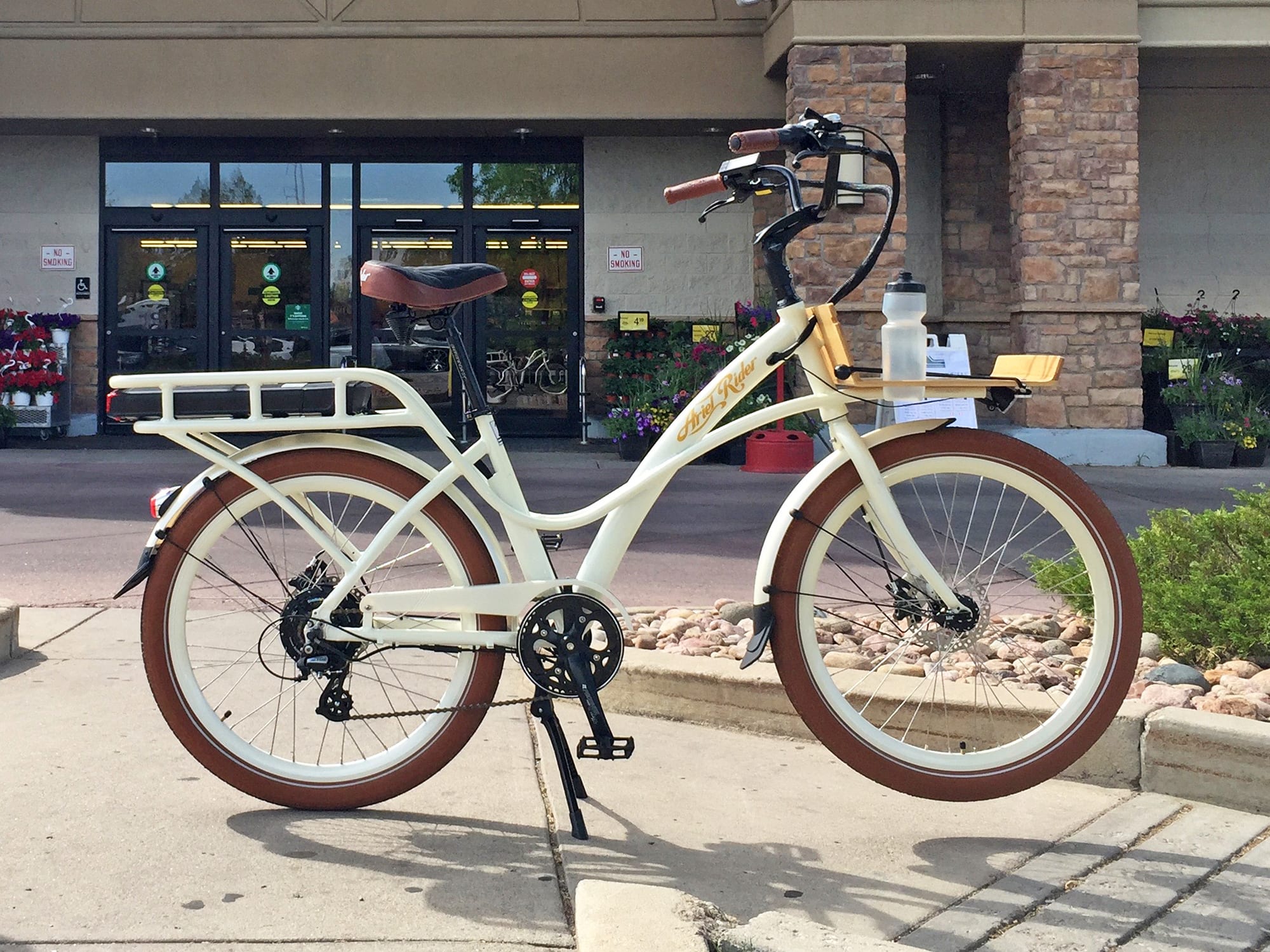
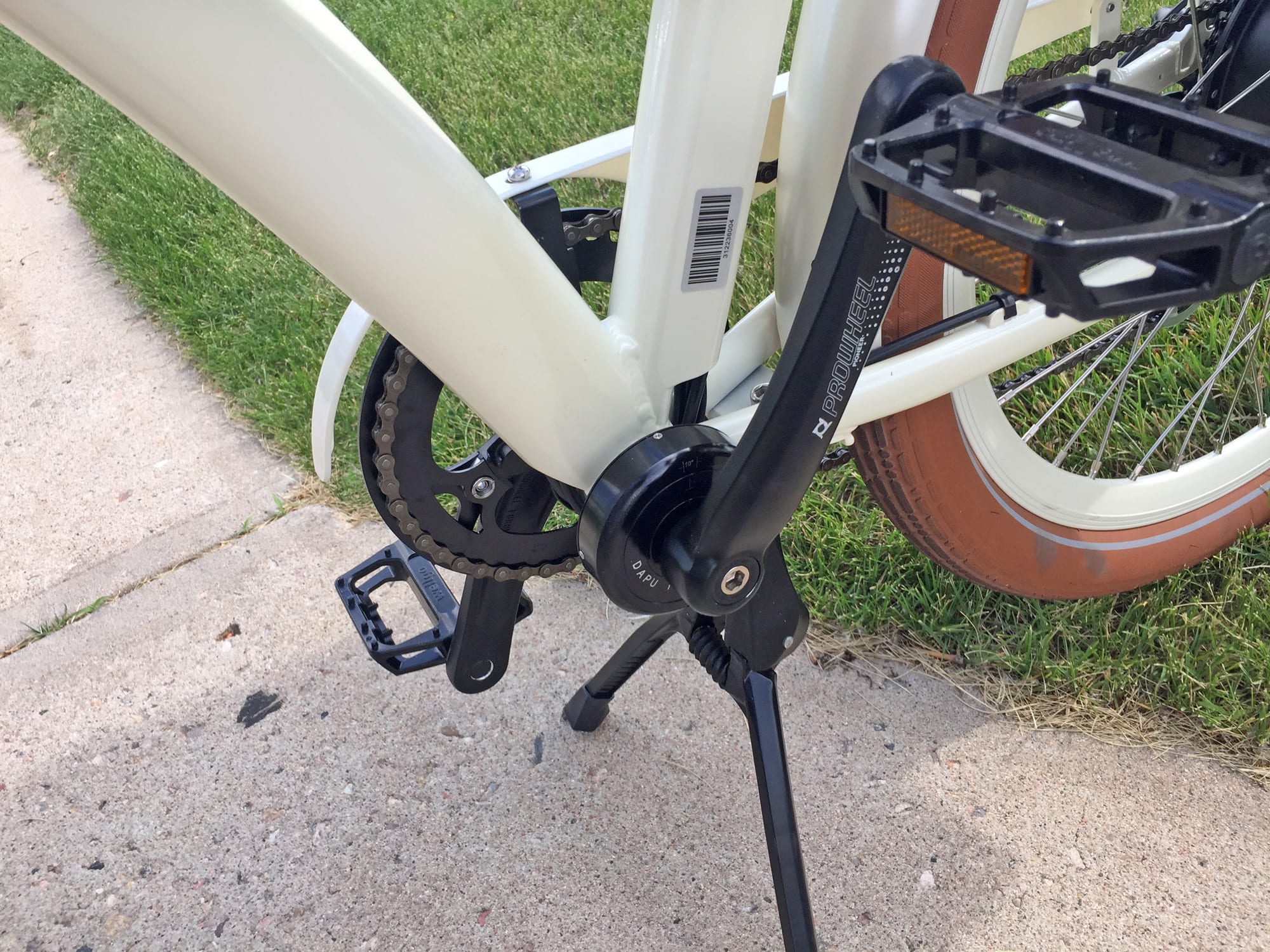
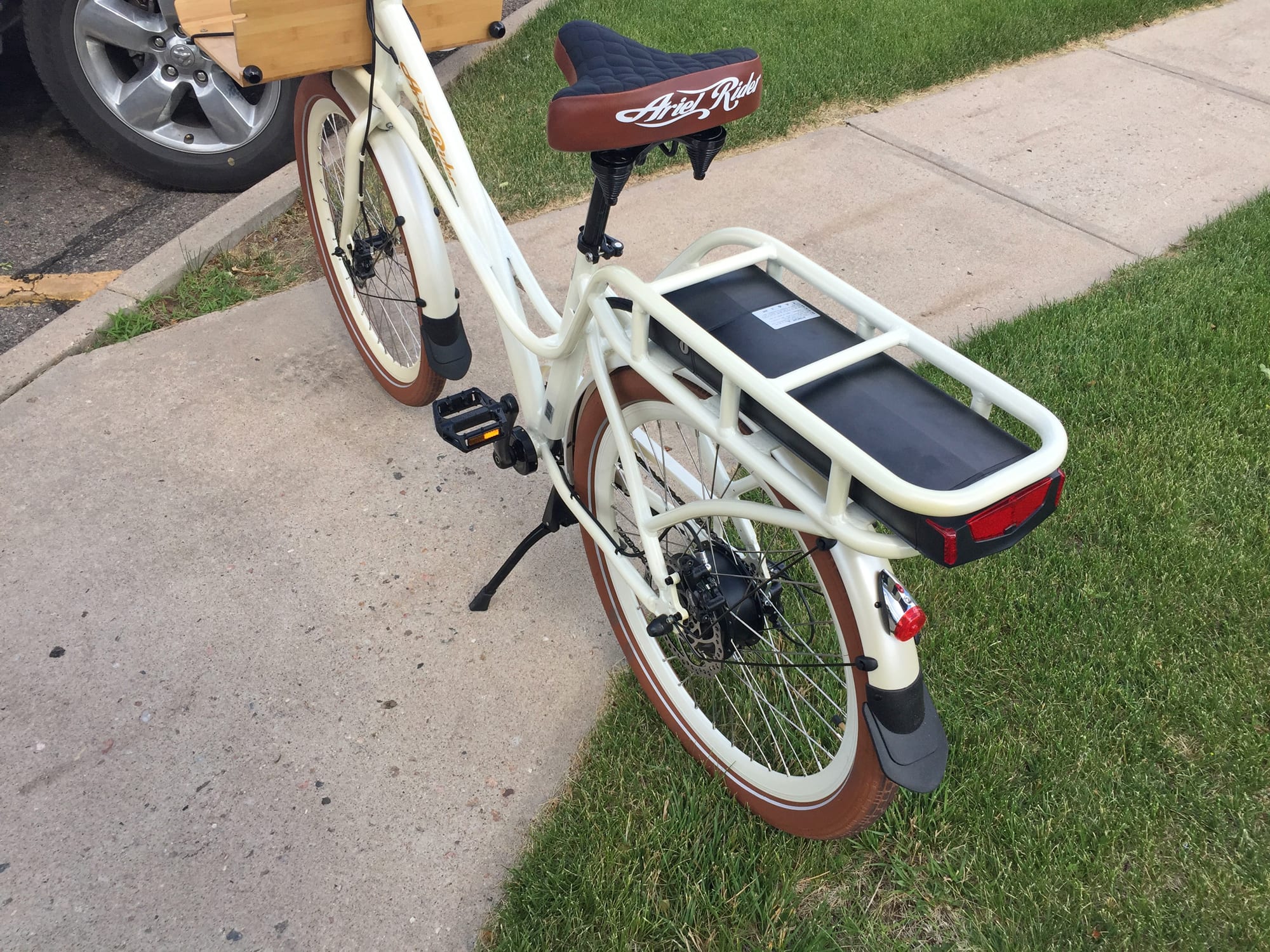
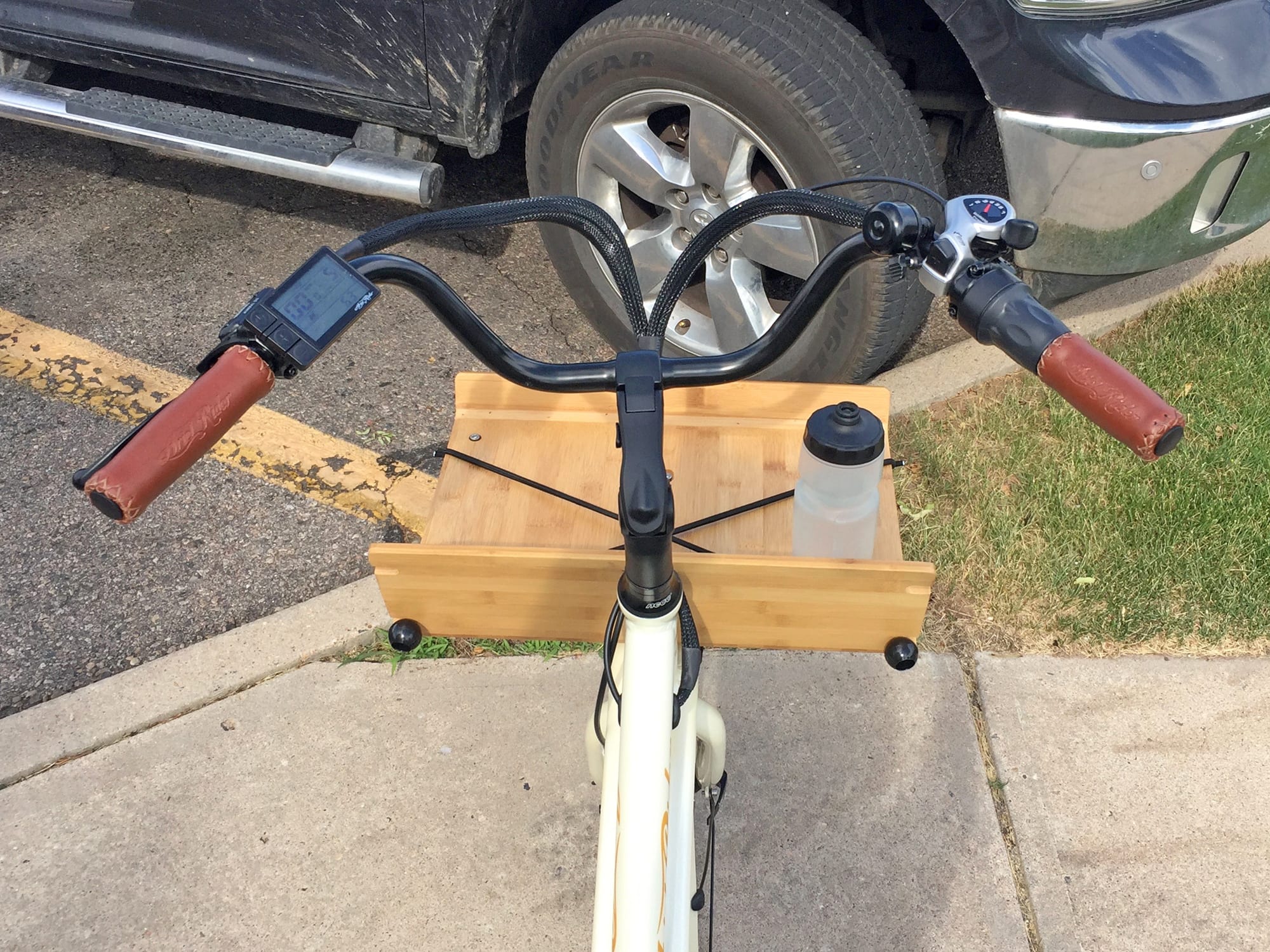
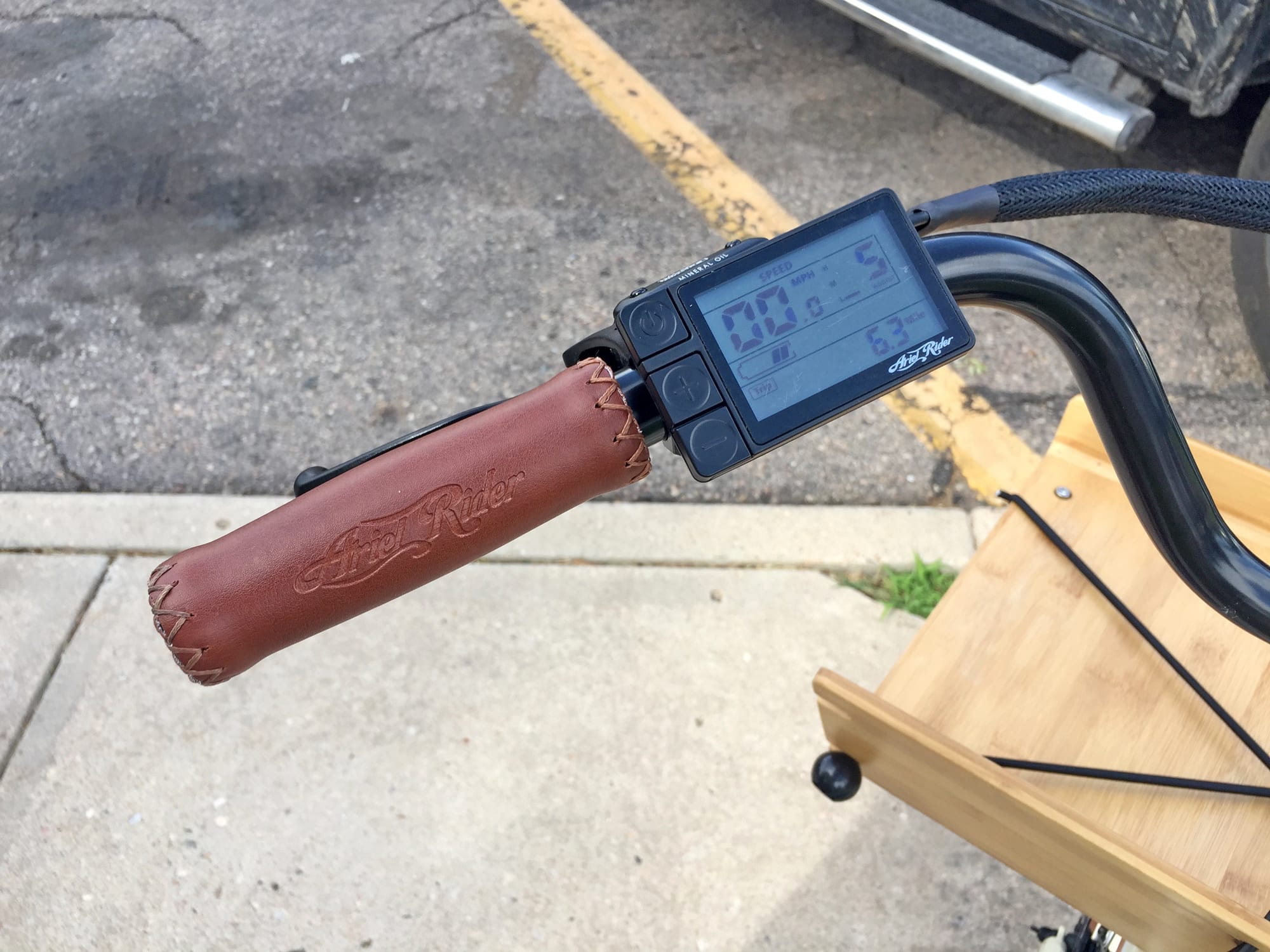
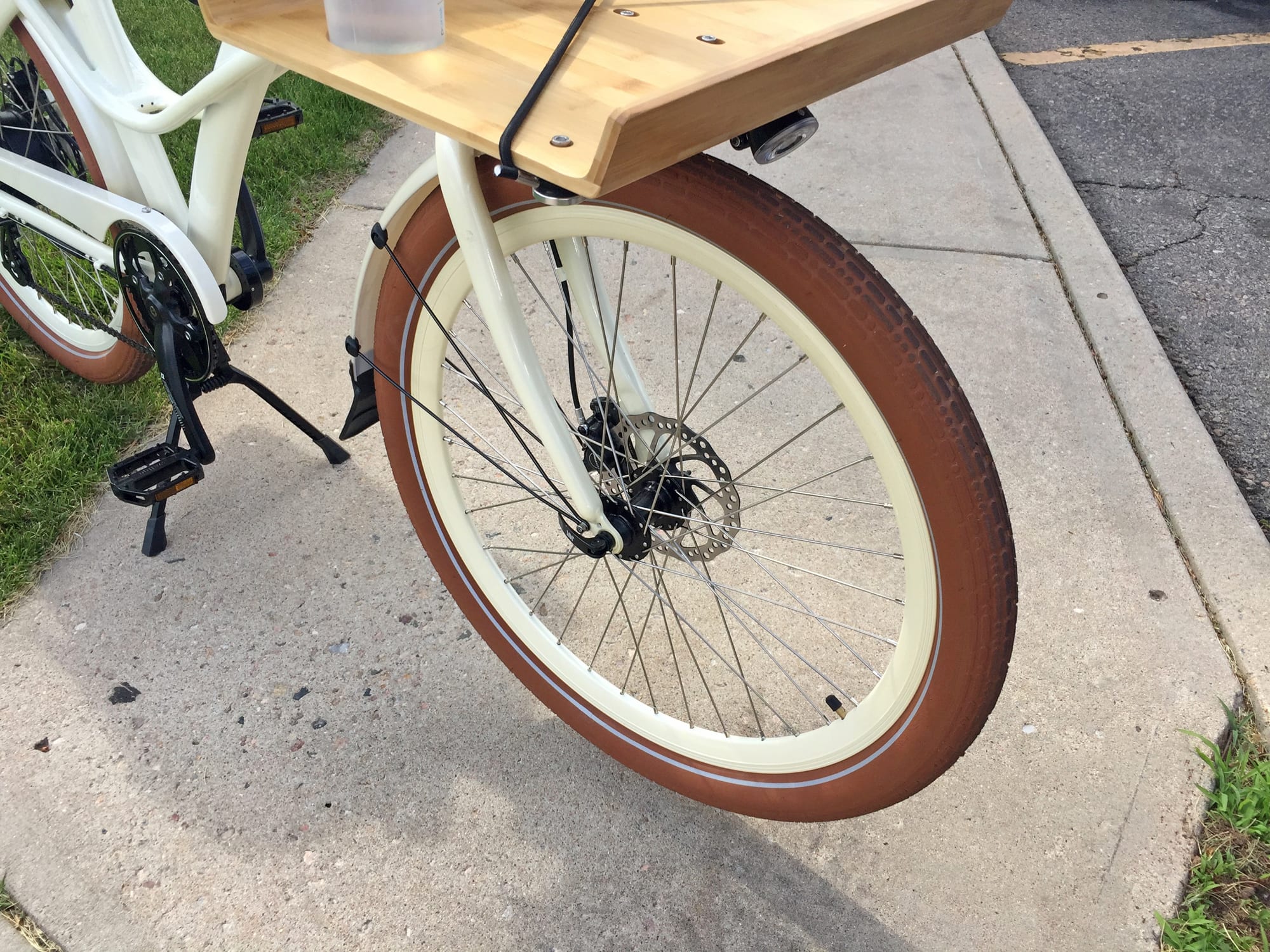
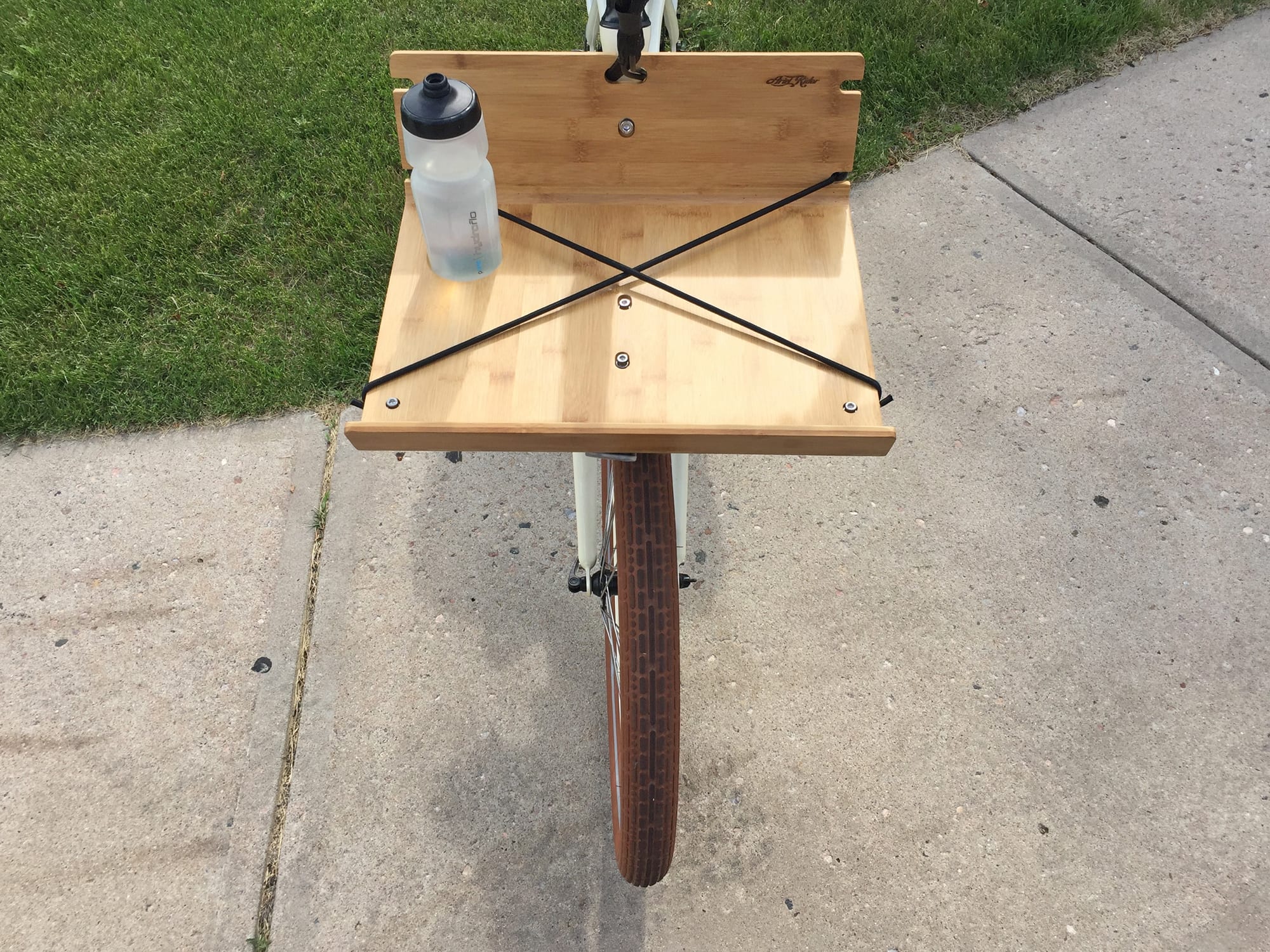
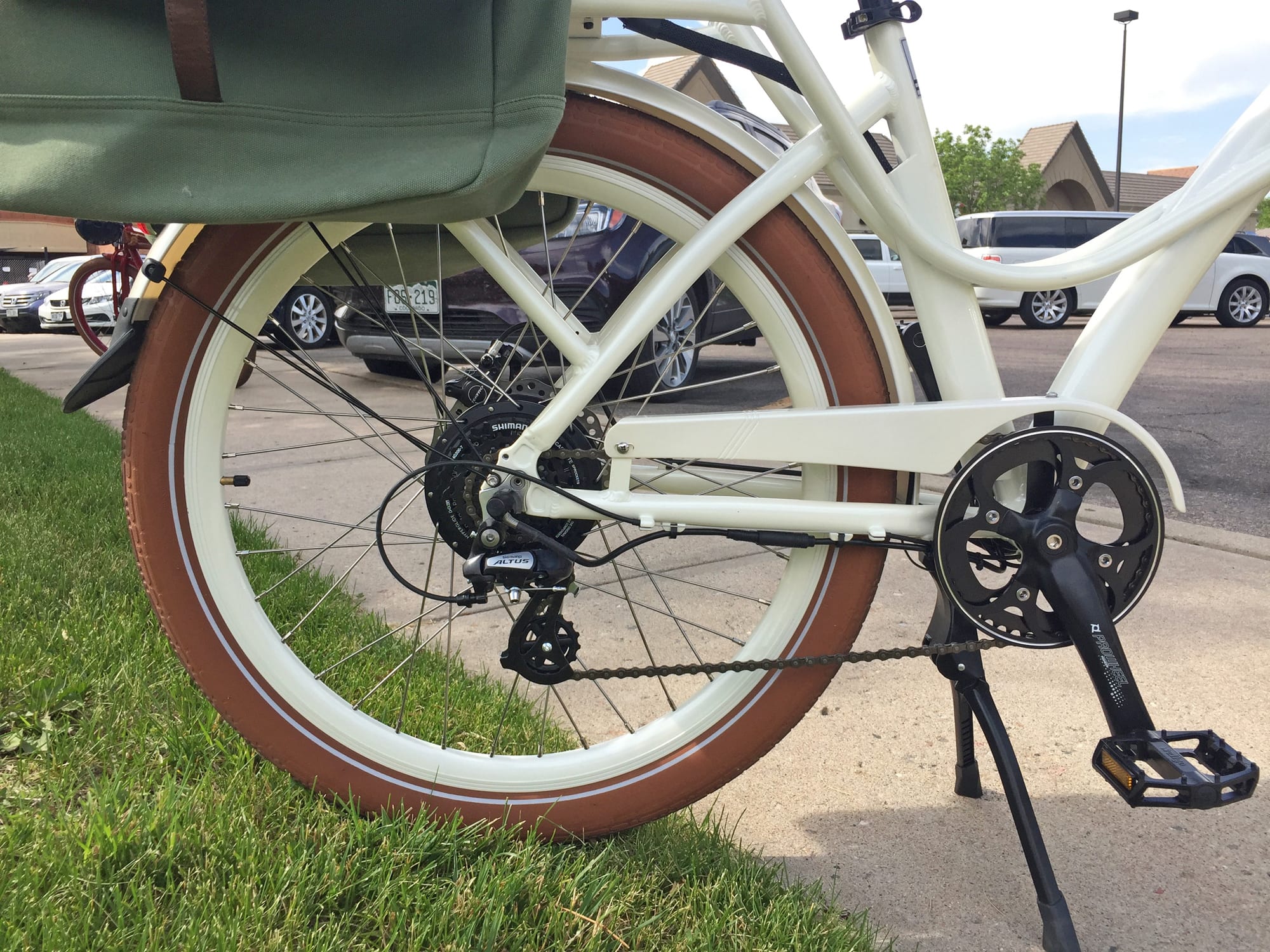
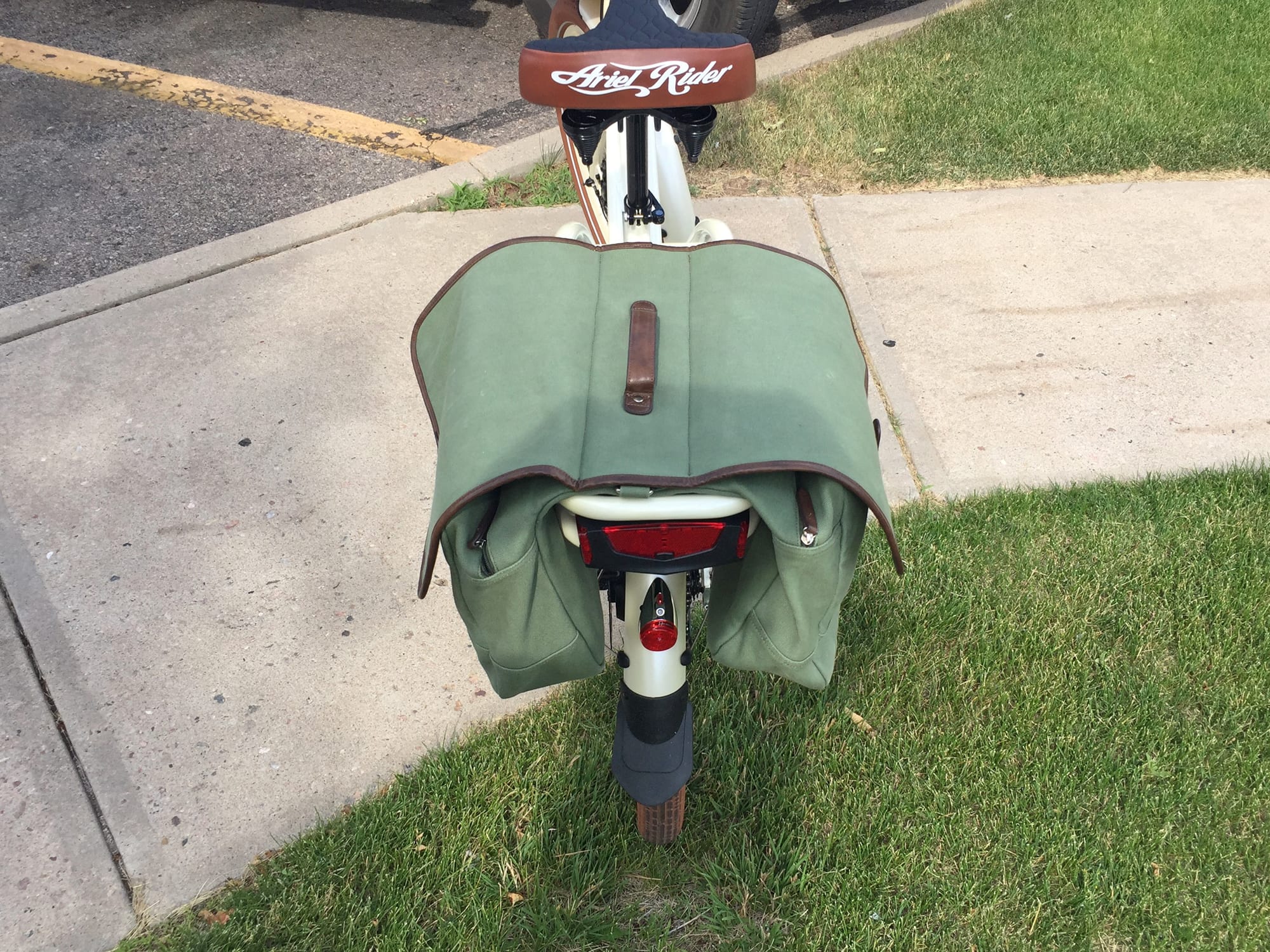
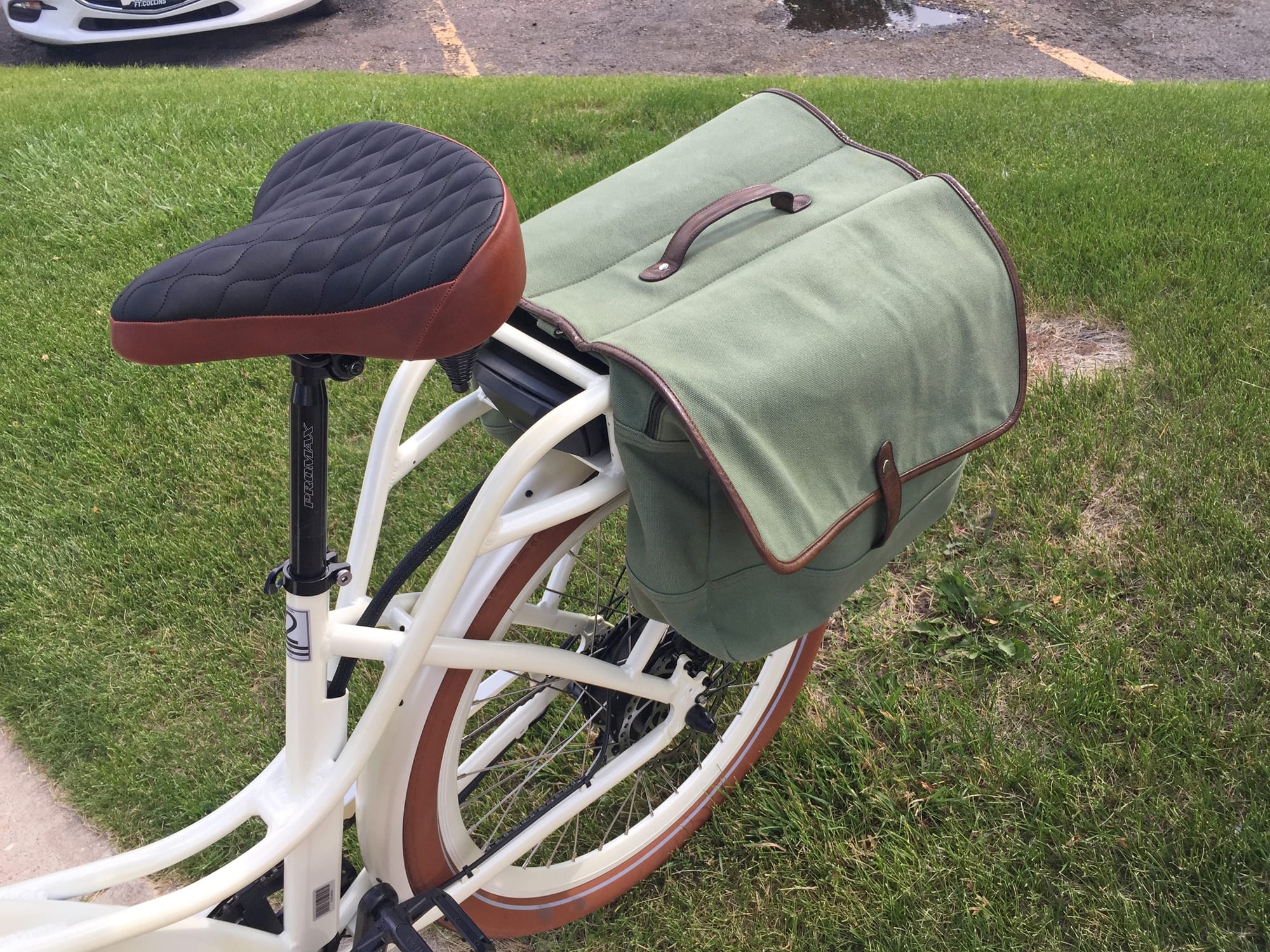

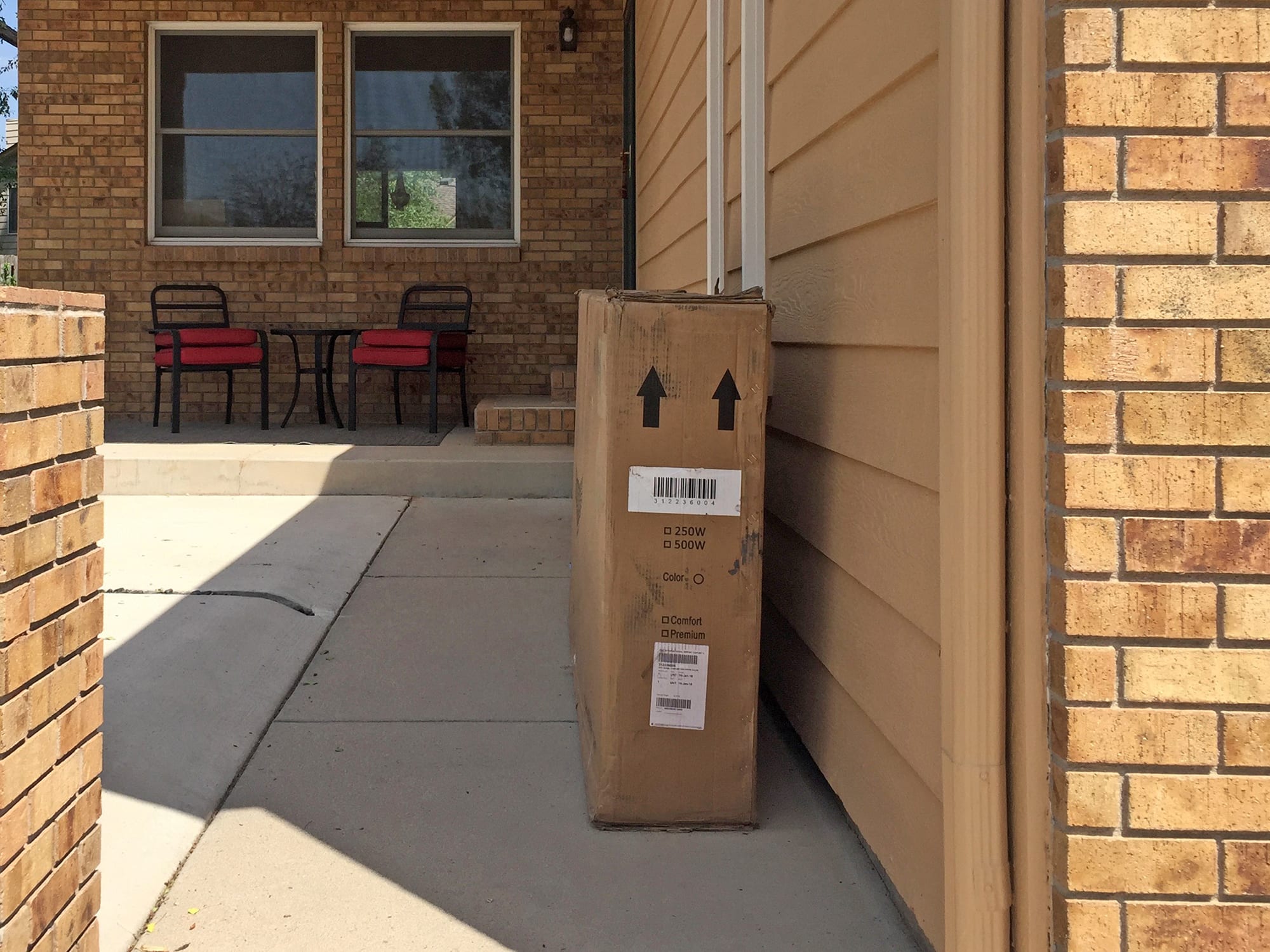
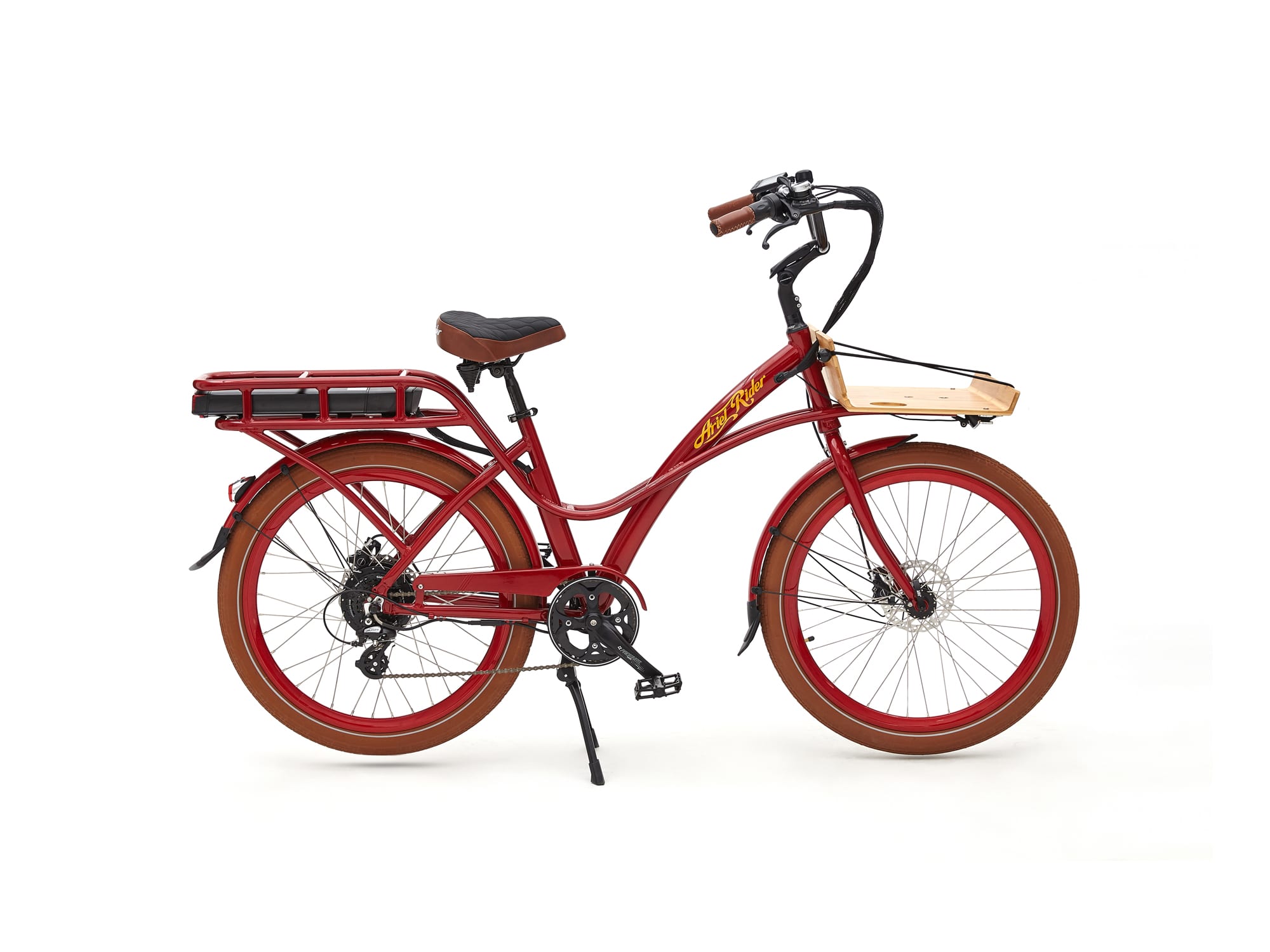

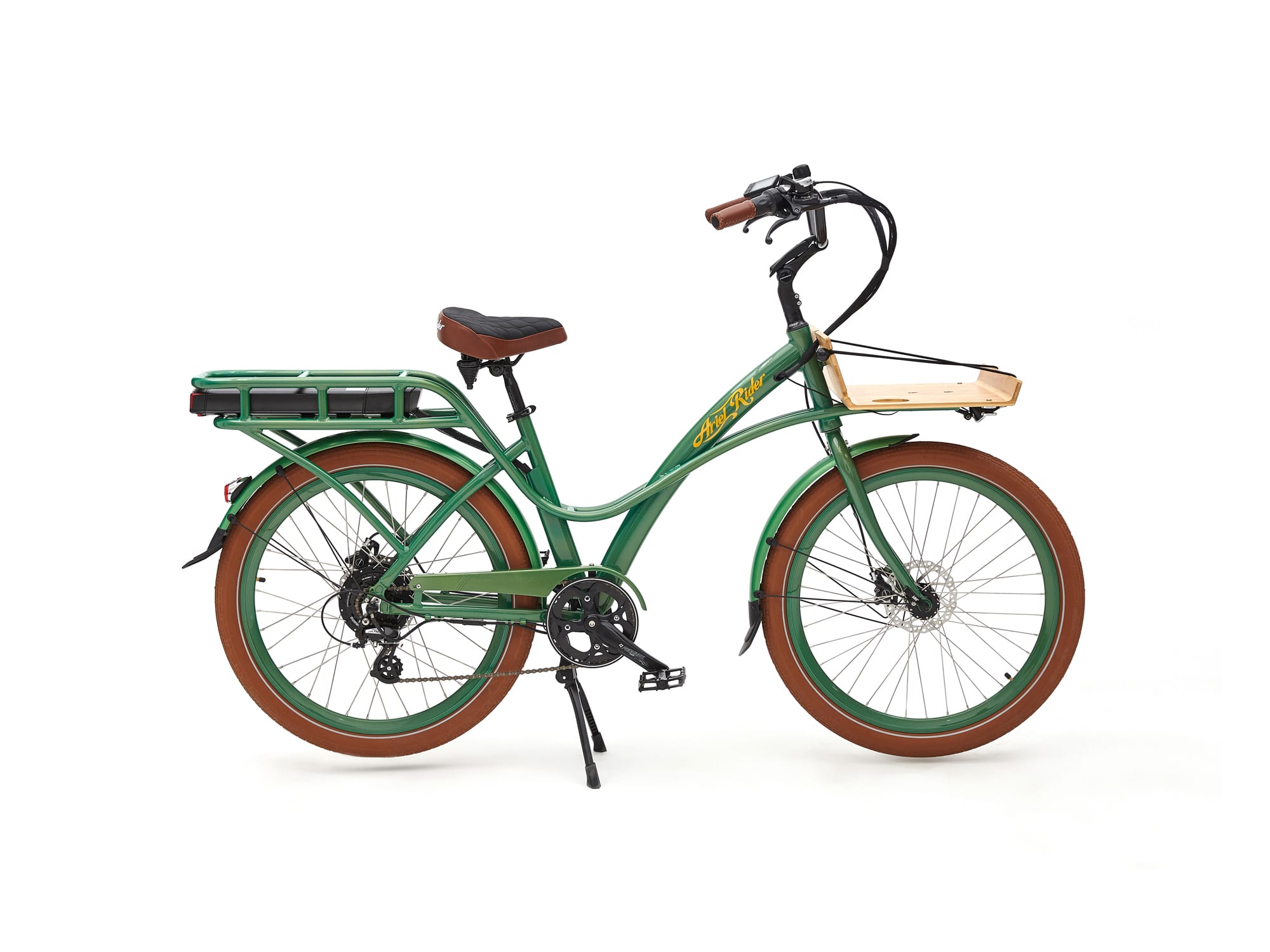

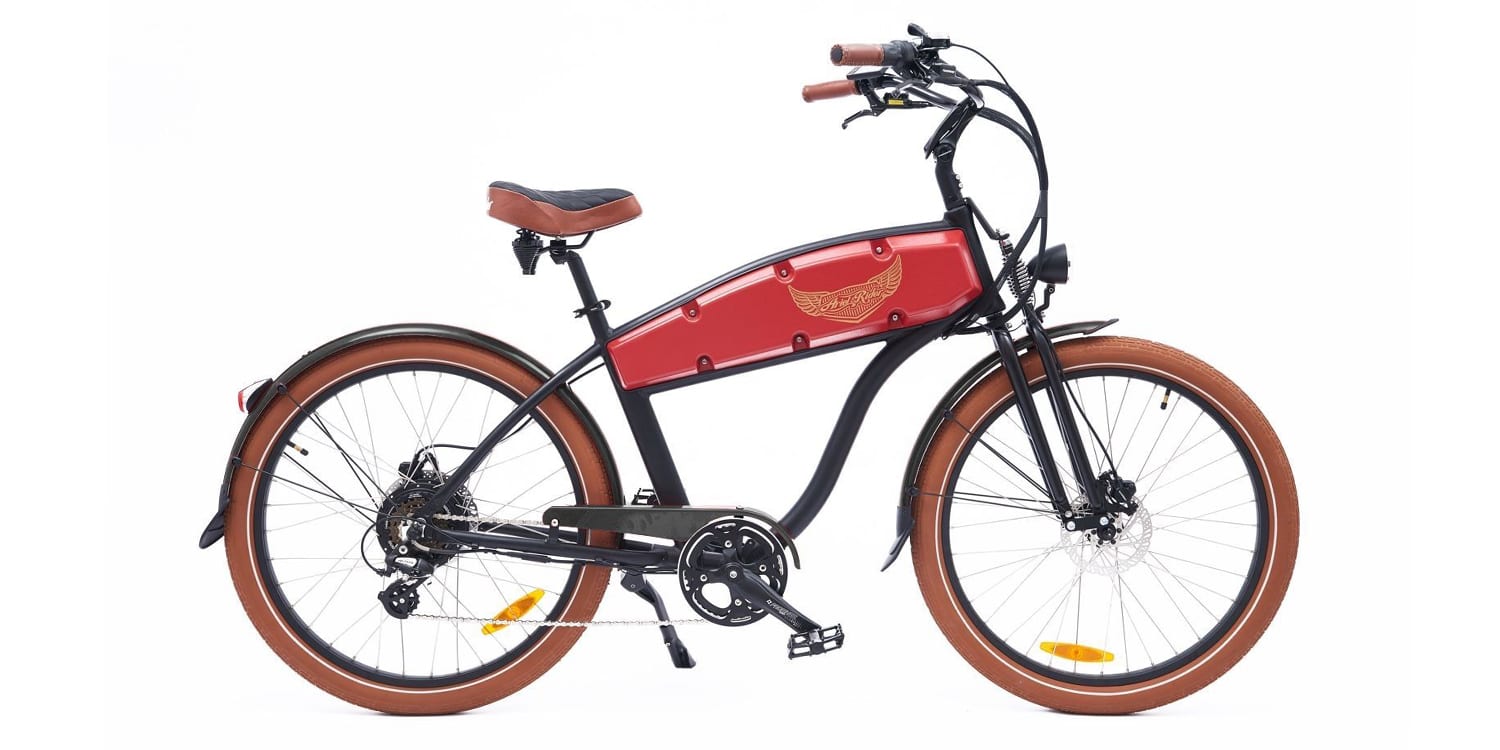
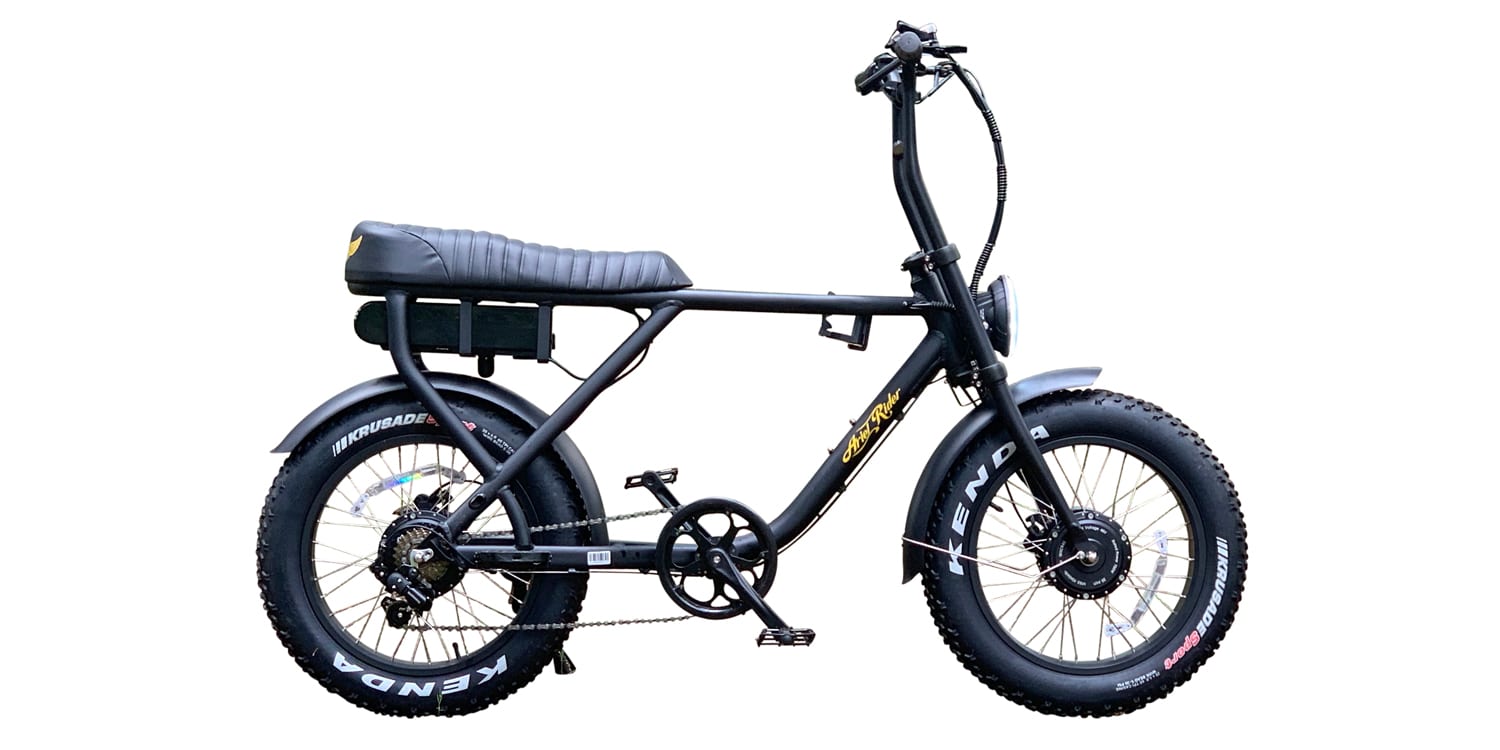
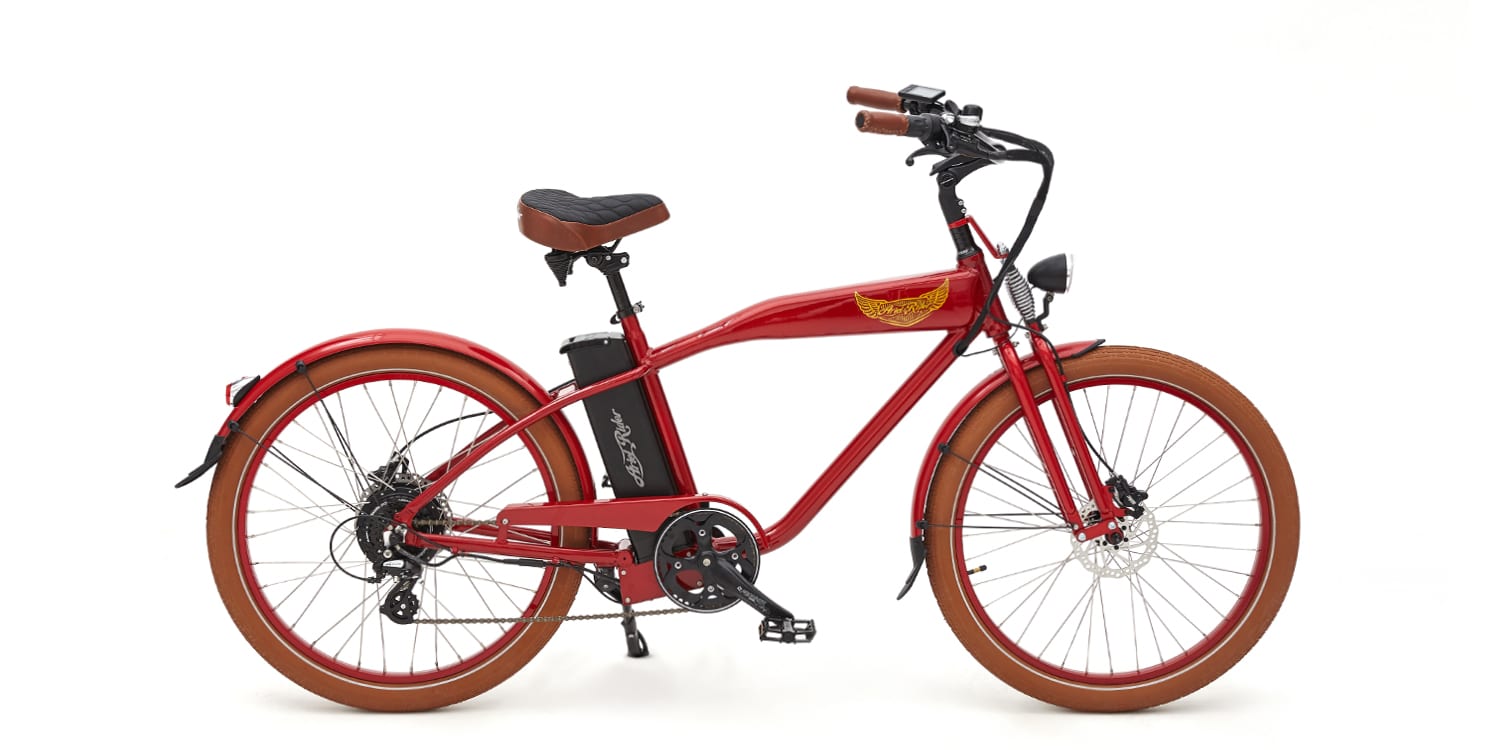
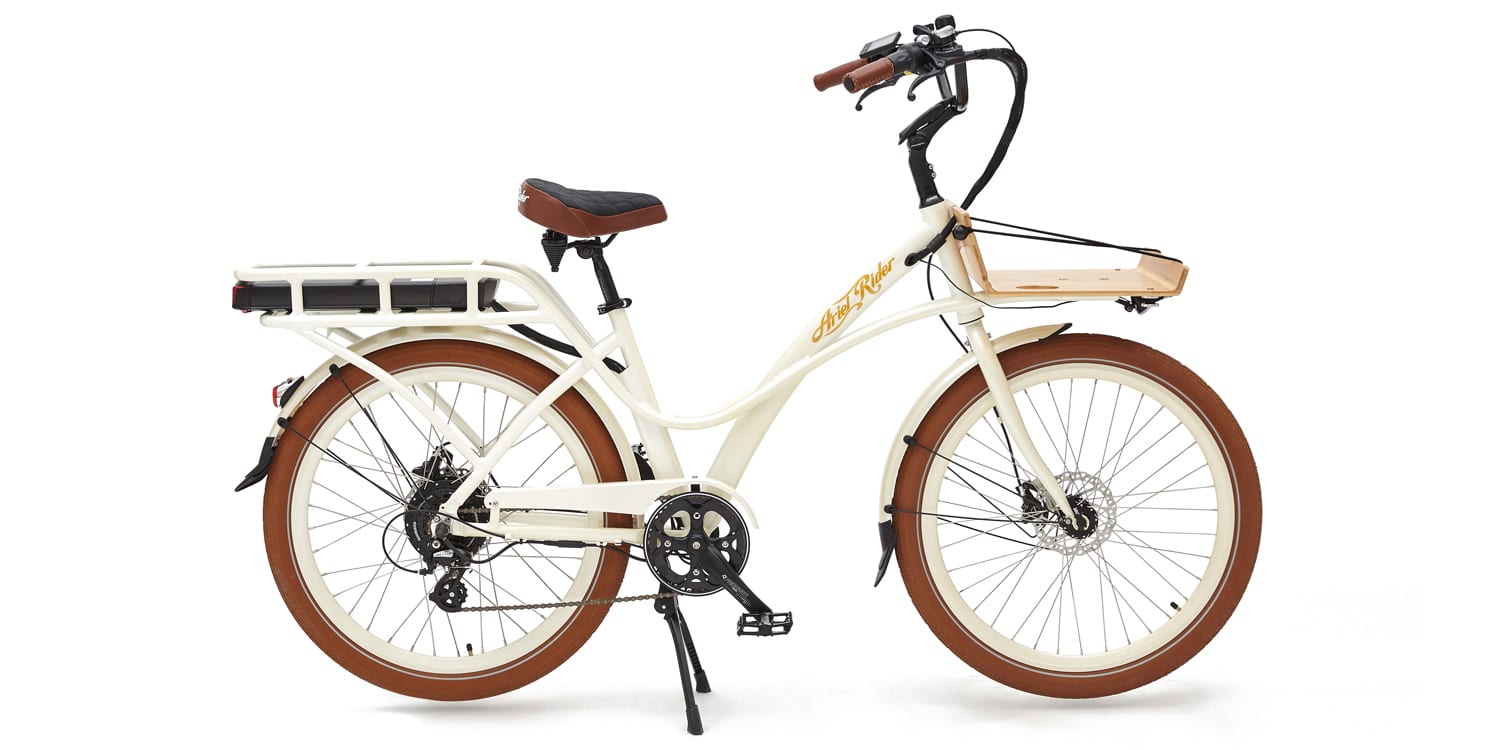
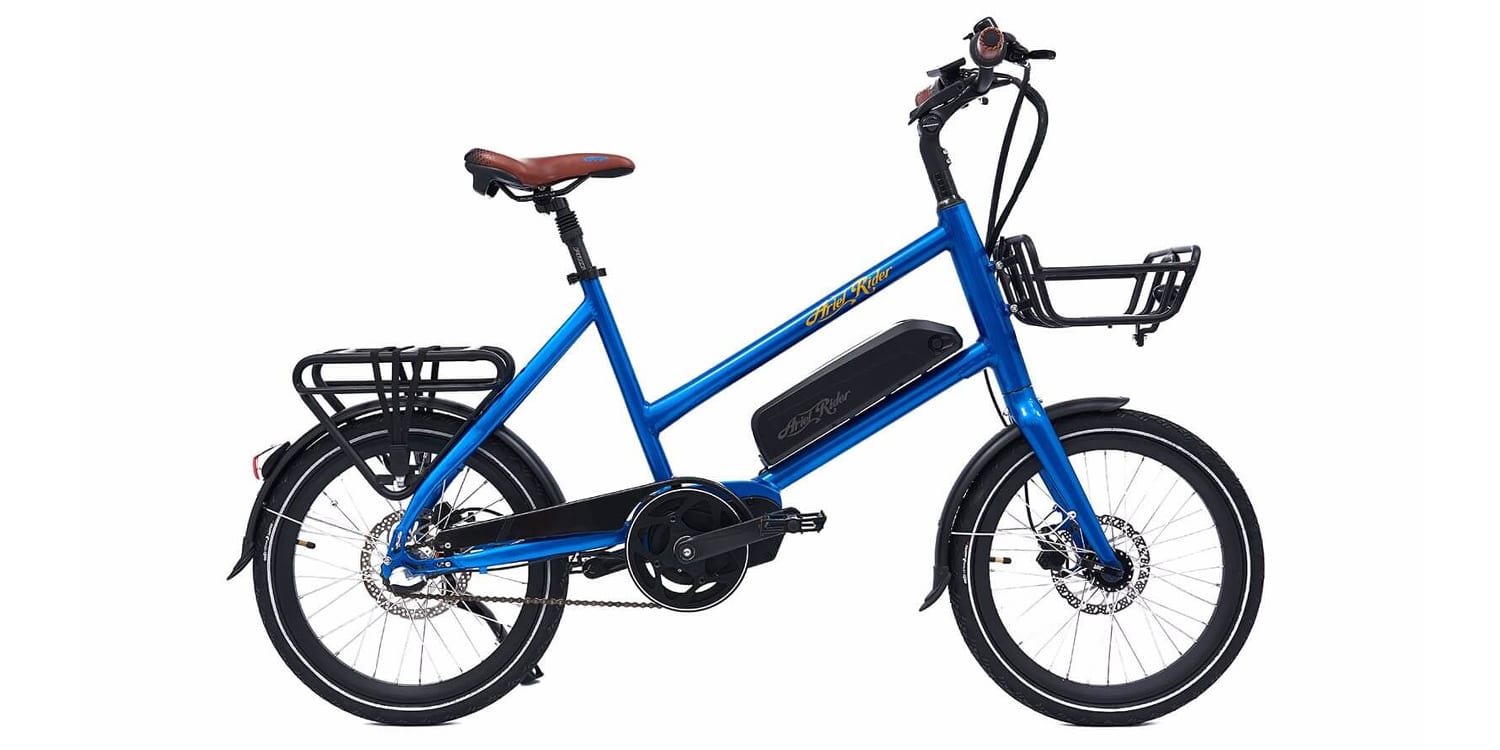
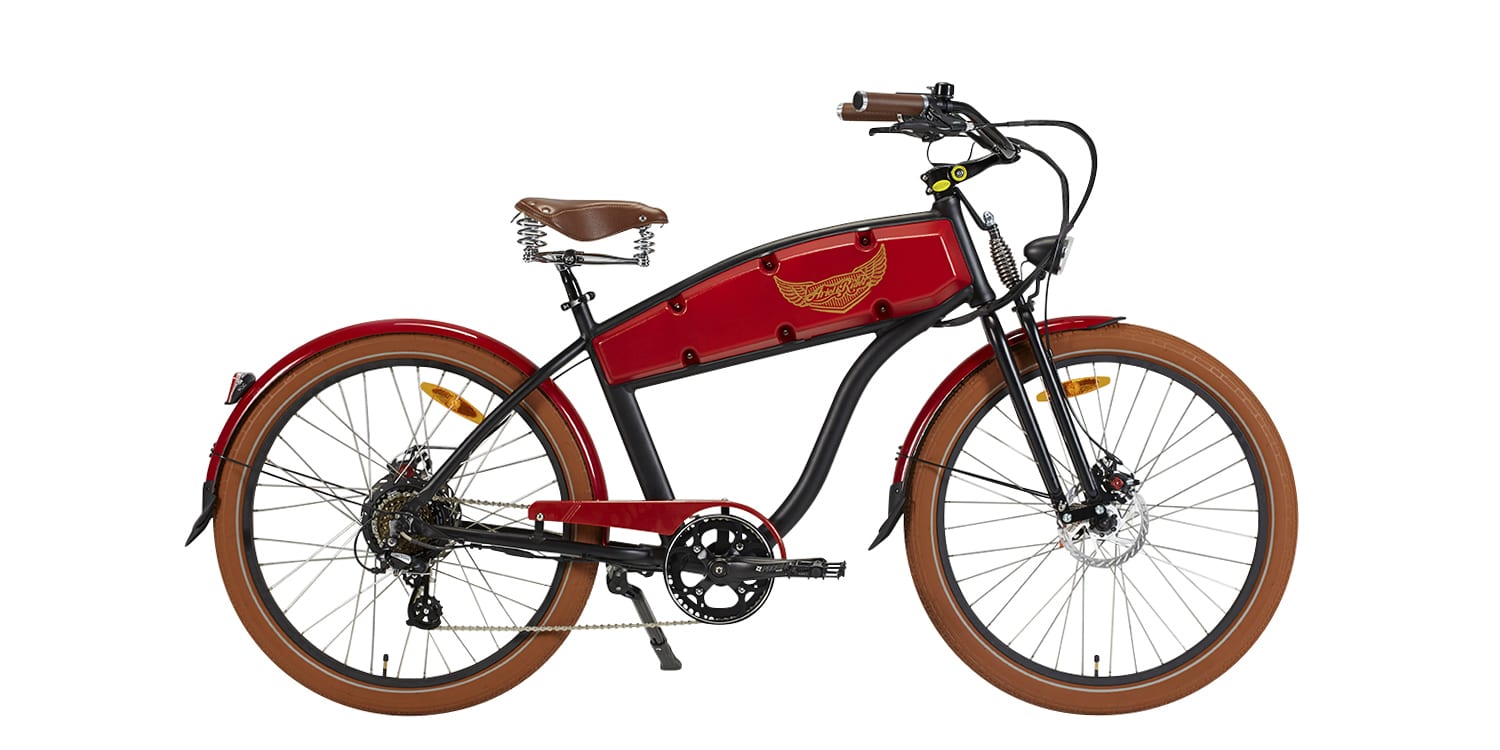
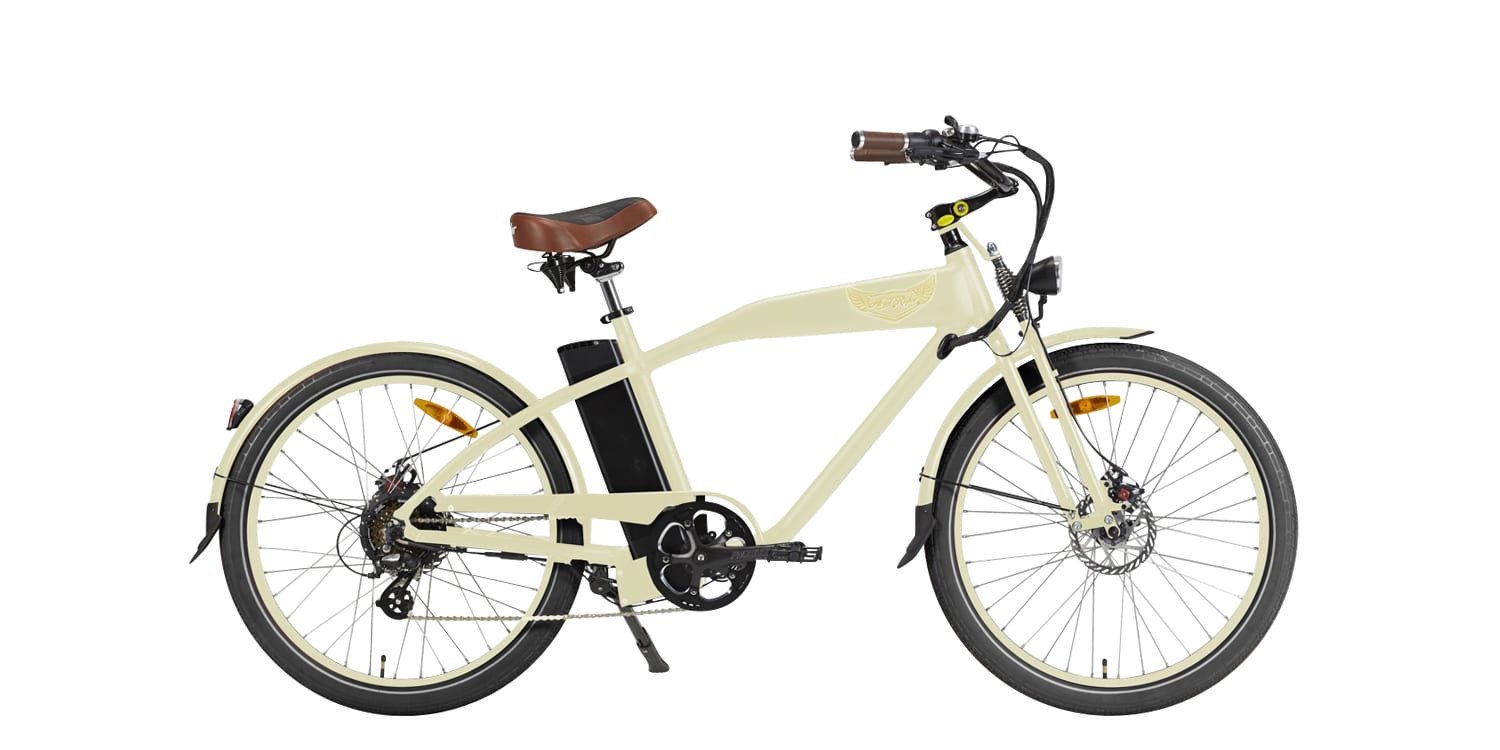
Mike says
One item that needs to be pointed out with these direct on-line bikes, is that unless you are very proficient at setting these up, and have done it a number of times before, there is a rather high risk it will not go smoothly. I get these ebikes in all the time, and there is nearly always something that goes awry. Bent fenders, brakes not adjusted properly from the factory, rims out of true, head spacers missing, derailleurs rarely ever properly indexed, and none of that includes damage during shipping. Shipping damage occurs much more frequently, when an ebike ships solo, and not on a pallet ( where there is protection on the bottom, and 4 or 5 ebikes strapped securely together on that pallet.) Ebikes shipped via BikeFlights (i.e. Via Fedex), get bounced all over the place, often can be tossed inside the trucks as drivers move packages around during delivery, and then much worse at the terminals. Its a toss up at which shipper is worse between UPS and Fedex. So just be prepared for the potential busted headlights, loose/ripped wires, bent forks, even broken seats, broken tail-lights, bent racks, scratches, damaged chain guards, or missing parts that fell out during shipment as a hole got punched in the box. If you are prepared for the above, then by all means, its worth a shot. But with that initial small reward of a few less dollars, the risks are fairly high that you are going to need to be prepared to not only do some work, but know what you are doing, and then dealing with getting replacements, and all warranty work yourself. Its easy for the vendor to ship you parts. Much harder if you have no idea how to finish the problem once you get the part, or if you get stuck spending hours because you don’t have the right tools. You can do all the zip ties and foam and tape you want for these ebikes before shipping, but the shippers simply dish out a lot of punishment – its gotten worse over the years as drivers are at an all time low (50,000 short right now for long haul), freight volumes super high, driver limits on windshield time, rushing, people tired, and rather low worker skill in the industry. And things often do not show up as issues right away, so again be prepared to have to make adjustments days or months later, that really no dealer will be willing to take the time to do it for you as he knows you bypassed him/her in the first place to get your on-line ‘deal.’
Court says
Hey, Mike! Thanks for chiming in with the warning about direct order products. It’s true, there’s usually some extra hassle to deal with and I almost always see damage to the box… your point about shipping on pallets is a great one! and that makes sense for why ebikes in shops are usually undamaged vs. individually delivered ones. When you start out with a degraded product (wheel untrue and derailleur out of tune) it can impact the entire life of the bike… and the time and repair service can indeed exceed that initial cost savings. Good point about shops not wanting to help with repairs for products that they did not sell, sometimes they simply don’t have the parts on hand. I’ll try to call this out more in the future but feel that your writeup here is very thoughtful and objective. Thanks for keeping a cool head… maybe post this in the EBR forums under the guides/resources section (and feel free to elaborate) and I’ll add a video to give it some additional interest.
For this particular review, I thought the C-Class arrived in exceptionally good shape and was happy for Arda and his brother Berk to see that nothing had been damaged along the way. Both of the other bikes were brought pre-assembled by them for this visit, so I cannot say what condition they were in when arriving from Asia (where most ebikes are manufactured). The introduction of Velofix and Beeline can aid in the process of assembly and post-purchase service, but I do tend to recommend local shops as the best point of purchase, and almost always go that route for myself.
Buck says
I’m interested in the ARIEL C class bike. I’m 6’5″ and wondering if the seat would go high enough for me to pedal correctly. thanks
Court says
Hi Buck! You’re definitely on the taller side, and many ebikes are just made with one frame size these days (especially value priced products). The C-Class is a larger, sturdier product, that has an adjustable stem and seat post. I believe that it would work for you, and support more weight (guessing that you weigh a bit more because you’re tall). This is one of the products I would recommend for taller people, and you could always seek out a longer seat post if you weren’t quite getting the full leg extension. It’s nice to have a throttle to help get going, and I appreciate the step-thru design, even though you probably have a longer inseam. I hope this helps… a couple of other good options are the Pedego Interceptor or Electric Bike Company Model C or S
Rick says
regarding Mike’s comments. He is obviously a dealer. Which is ok. But what alternative do ebike buyers have when they there are no dealers that sell them where they live? I live in the metro Atlanta area, and there are pracitcally ZERO ebike dealers here. So what do we do? We dont’ have a choice but to take the chance and buy online.
Jordan says
Any chance the newest version of the c-class will be getting a review soon? It looks like a completely different bike now that it’s a mid-drive motor.
Court says
Hi Jordan! The guys at Ariel Rider have always stayed in touch and planned out fun review visits. I suspect that we will be connecting again sometime soon, but it’s not on the books yet. Thanks for letting me know that you’re interested in seeing it ;)
Jake says
The company website says that this is a mid motor (48V 500W mid-drive motor, 90 Nm torque) while the review says it is a rear mounted geared hub.
Court says
Hi Jake! You’re totally correct. My review for this bike is from 2018 and Ariel Rider has done a massive upgrade since then. The new bike puts the battery low and center, uses a mid-motor, and has redesigned the rear rack. To me, the new bike looks awesome! I do like the Ariel Rider brand, and perhaps you can get some model-specific feedback in the forums since my own content is out of date now. I keep these reviews up as an archive for people who might find one used or want to fix an older model that they have owned for many years ;)
Jake says
Thanks, Court. I’m in the market for my first ebike and Ariel Rider is definitely on the list. You and the other reviews do us all a great service.
Court says
Thanks Jake! It’s a neat technology. I hope you find a great fit and you’re welcome to stop by and comment here anytime :)